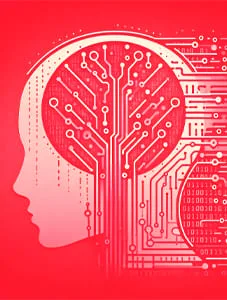Navigating the Human Element of AI Integration: A Comprehensive Guide for CIOs
The increasing prevalence of Artificial
Intelligence (AI) in the dynamic terrain of organizational dynamics demands a
purposeful and harmonious integration with human workers. Chief Information
Officers, or CIOs, are essential in coordinating this cooperation and making
sure that human workers and AI work together harmoniously for maximum
productivity. This thorough handbook identifies the main areas in which CIOs
can impact the integration of AI with human labor.
1 1. Promoting Interaction between AI Systems and
Humans
The key to a successful AI integration is
collaboration. Working collaboratively with Human Resources (HR) teams to
provide specialized training programs, CIOs are well-positioned to spearhead
the initiative. These programs seek to educate human laborers on the potential,
limits, and inner workings of artificial intelligence. Moreover, CIOs can
support interdisciplinary teams that combine human workers with AI
technologies, creating a setting where both parties can work together with
ease.
Encourage
AI Understanding
CIOs and HR can collaborate to provide
comprehensive training courses that help staff understand artificial
intelligence. These courses offer a strong basis for productive cooperation by
emphasizing the inner workings of AI and its potential as well as its
constraints.
Promote the Formation of Multidisciplinary Teams
CIOs may promote the creation of
cross-functional teams that combine AI capabilities with human expertise. These
teams provide an environment where human-AI system collaboration is natural and
synergistic by fostering a dynamic exchange of ideas and abilities.
Open Up Channels of Communication
Effective teamwork requires open and honest
communication. For human employees to ask questions, exchange experiences, and
fully comprehend how AI fits into their company environment, CIOs can build up
specific communication channels.
Through the cultivation of these elements,
CIOs enhance human-AI system collaboration, thereby establishing the groundwork
for peaceful cohabitation inside the workplace. By taking a proactive stance,
businesses may optimize the advantages of artificial intelligence (AI) while
maintaining the human element essential to their success.
2. Redesigning Jobs to Promote Smooth Collaboration
To achieve the best possible synergy, the introduction of AI may need a recalibration of current employment responsibilities. Roles that can profit from AI integration can be identified by CIOs working with HR teams. CIOs ensure that AI technology and human workers complement each other by carefully redesigning jobs, and improving overall operational efficiency.
3. Developing Skills to Empower Human Workers
The workforce needs to be skilled for AI integration to be successful. CIOs and HR teams can work together to pinpoint skill shortages and create training curricula that enable human workers to effectively interact with AI technologies. By making this calculated investment in skill development, human laborers are guaranteed to be competent and adaptable in an AI-driven workplace.
4. Techniques for Change Management for Easy Transitions
Organizational changes brought about by AI integration are inevitable and may encounter resistance or concerns from human personnel. CIOs may create thorough change management plans by collaborating closely with change management teams. These strategies minimize disruption by addressing possible issues, outlining the advantages of AI collaboration, and assisting human workers in a seamless transition.
5. Handling Ethical Issues with AI Incorporation
The ethical ramifications of integrating AI are critical. CIOs have to make sure that the use of AI is consistent with ethical standards, working with the legal and compliance departments. Fairness, accountability, and transparency are essential factors that ought to direct the integration process. CIOs protect against detrimental effects on human workers and strengthen confidence within the organizational structure by maintaining ethical standards.
In conclusion, CIOs must take a strategic
stance to successfully integrate AI with human labor. CIOs can guide
their enterprises toward a future where AI enhances human capability rather
than replaces it by placing a high priority on collaboration, job redesign,
skill development, change management, and ethical considerations. This all-encompassing
strategy guarantees that, in an increasingly AI-driven environment, human
laborers continue to be vital contributors to the company's success while
also being in line with organizational goals. By supporting these projects,
CIOs enable their companies to fully utilize AI's promise while keeping the
crucial human element at the center of their success.


